|
|
|
Sort Order |
|
|
|
Items / Page
|
|
|
|
|
|
|
| Srl | Item |
| 1 |
ID:
114027
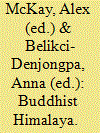

|
|
|
|
|
| Publication |
Sikkim, Namgyal Institute of Tibetology, 2011.
|
| Description |
2 vol.set; 343p.Pbk
|
| Series |
Proceedings of the Golden Jubilee Conference of the Namgyal Institute of Tibetology Gangtok, 2008
|
| Contents |
Vol I: Tibet and the Himalaya
|
| Standard Number |
9788192226101
|
|
|
|
|
|
|
|
|
|
|
|
Copies: C:1/I:0,R:1,Q:0
Circulation
| Accession# | Call# | Current Location | Status | Policy | Location |
| 056695 | 294.3923/MCK 056695 | Main | On Shelf | Reference books | |
|
|
|
|
| 2 |
ID:
114068
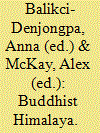

|
|
|
|
|
| Publication |
Sikkim, Namgyal Institute of Tibetology, 2011.
|
| Description |
2 vol.set; 322p.Pbk
|
| Series |
Proceedings of the Golden Jubilee Conference of the Namgyal Institute of Tibetology Gangtok, 2008
|
| Contents |
Vol II: Sikkim Papers
|
| Standard Number |
9788192226118
|
|
|
|
|
|
|
|
|
|
|
|
Copies: C:1/I:0,R:0,Q:0
Circulation
| Accession# | Call# | Current Location | Status | Policy | Location |
| 056696 | 294.3923/BAL 056696 | Main | On Shelf | General | |
|
|
|
|
| 3 |
ID:
116202
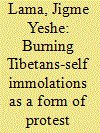

|
|
|
| 4 |
ID:
152490
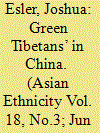

|
|
|
|
|
| Summary/Abstract |
This article examines how certain Tibetans and Han Chinese converts to Tibetan Buddhism in Diqing Tibetan Autonomous Prefecture and Beijing are articulating various forms of environmental discourse, both in terms drawn from Tibetan ‘geopiety’, and/or from a Western model of environmental protection. In relation to these trends, I further explore how certain Tibetans are articulating their understanding of Tibetan Buddhism within an apparently localised context, while other Tibetans are more obviously appropriating from discourses originating in the West and/or wider Chinese society to become more ‘modern’, while at the same time retaining a conceptualisation of Tibetan Buddhism that is hybridised between traditional and modernist understandings. I also explore how some Han practitioners may seek to become more ‘Tibetan’ by endorsing localised forms of Tibetan Buddhism and/or ‘performing’ certain Tibetan modes of religiosity, while others, due in part to geographical distance from the Tibetan landscape and cultural context, endorse an understanding of Tibetan Buddhism which is more closely tied to discourses of environmental protection originating in the West. In both Tibetan and Han Chinese cases, informants reflect upon their own beliefs and identity by gazing at the Other (Tibetan, Han, or Westerner), and marking out differences and similarities between Self and Other.
|
|
|
|
|
|
|
|
|
|
|
|
|
|
|
|
| 5 |
ID:
132278
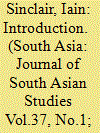

|
|
|
|
|
| Publication |
2014.
|
| Summary/Abstract |
Michael Allen is a pioneering figure in the study of the Newars, the indigenous people of Nepal's Kathmandu Valley. Allen carried out his main fieldwork in Nepal between the mid 1960s and late 1970s and enjoyed a successful academic career, twice acting as head of the Department of Anthropology at the University of Sydney between 1985 and 1991. While Allen is also well known for his studies of cults in settings as disparate as Vanuatu and Ireland-and after retirement was honoured by colleagues for his 'commitment to the comparative method' with a festschrift published in 2001 -his work on the Newars remains especially vital and worth re-visiting. The population, environment and government of Nepal have all changed greatly in recent decades; at the same time, the significance of Newar religion is beginning to be more widely appreciated. In this special section of South Asia we re-examine some of the rituals, institutions and traditions treated by Allen in four new papers, contributed by scholars around the world.
|
|
|
|
|
|
|
|
|
|
|
|
|
|
|
|
| 6 |
ID:
128494
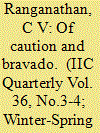

|
|
|
| 7 |
ID:
185933
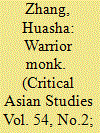

|
|
|
|
|
| Summary/Abstract |
This article revisits the Ninth Panchen Lama’s (Choekyi Nyima, 1883–1937) controversial exile in China and Inner Mongolia between 1924 and 1937. As the most renowned political dissenter of the then-nascent Tibetan state and the second most important religious leader for Mongolian and Tibetan Buddhists, the Ninth Panchen Lama played a significant role in the early-twentieth-century Chinese, Tibetan, and Mongolian political and spiritual worlds. Academic scrutiny of the Ninth Panchen Lama’s association with China has facilitated the scholarly understanding of the “subimperialist” policy that the Chinese Nationalist government devised to replicate the Qing Empire’s success in managing Mongol and Tibetan territories. Assisted by newly released sources and a shifting focus away from Chinese statesmen to the Tibetan monk, this article reassesses the power that the Ninth Panchen Lama wielded on the Sino–Mongol–Tibetan frontiers and his collaboration with the Chinese Nationalist government. This article argues that despite possessing many cosmetic features of the Qing-style relationship centering on the mutually agreed reinterpretation of an established status quo within a hierarchal framework, the alliance between the Ninth Panchen Lama and the Chinese Nationalist government was a venturesome entente based upon shared objectives that were audacious, contentious, and bore little resemblance to Qing precedent.
|
|
|
|
|
|
|
|
|
|
|
|
|
|
|
|
|
|
|
|
|